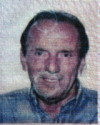THE TIMES WEDNESDAY JULY 30 1997
Andrew Drummond on his old friend Nate Thayer, who found Cambodia’s butcher
Last Friday, Nate Thayer achieved every journalist’s dream when he scooped the world by meeting, and obtaining footage of, Pol Pot.
By Monday, he was going through every journalist’s nightmare ‘ holed up in a Bangkok hotel, struggling to write his piece while fielding 24-hour phone calls from around the world. ‘I had 600 calls today,’ he said, with an air of incredulity, when we met that night for a few celebratory beers.
His piece will be publish in the Far Eastern Economic Review tomorrow, but footage of the meeting was broadcast on prime-time American television on Monday night, obtained for a reported $600,000. So how did this self-deprecating American journalist become the first Westerner to see Pol Pot in almost 20 years?
By those most old-fashioned of reporting methods, he says ‘ a combination of having the right contacts and ‘being in the right place at the right time’.
It was not his ambition to become a journalist. He arrived in South Asia in the late 1980s, initially as an academic on a grant to research the Chams, a group of Muslim refugees from Cambodia.
He soon switched his interest to rebel armies just across the border from Thailand. Saturated with refugees and rival rebel fighters, the area was a great source for stories.
Although his journalistic experience was restricted to local radio in the United States his intimate knowledge of the rebel factions in Cambodia could be put to other uses, and he filed freelance stories to the Associated Press bureau in Bangkok, the Phnom Penh Post and the Far Eastern Economic Review.
Still a freelance today, he is due to take a staff position as special correspondent with the Review in September.
Although he refuses to discuss the exact circumstances of his find, Thayer had already built up many contacts among the rebel groups on the border before the UN-brokered peace deal in Cambodia in 1991. He marched with two rebel armies for months through the Cambodian jungle.
One of the armies, FUNCINPEC is now one of two ruling parties in Cambodia.
One of his friends during that time was Roland Eng, who was the Minister for Foreign Affairs, and is now Cambodia’s Ambassador to Thailand.
Thayer comes from a wealthy Massachusetts family ‘ his father was a former American Ambassador to Singapore ‘ and has always played down the dangerous side of his work. ‘I don’t go looking for danger, but it sometimes happens,’ he says.
Perhaps this sang froid is in his genes ‘ his ancestors had been dining with the captain of the Titanic when it went down, and they survived.
This survivor’s luck appears to run in the family. Five years ago, while travelling on top of a six-wheel truck in Cambodia the passengers either side were killed when it ran over a landmine.
More recently he had to pack his bags quickly and depart Phnom Penh after naming a Cambodian businessman as an international heroin trafficker.
Thayer has been described as a ‘wild man’ ‘ an image he cultivates, with his head shaved bald save for a small ponytail at the back. He does not mind that this leads to inevitable comparisons with Marlon Brando in the film, Apocalypse Now.
Old Asia hands ‘ myself included ‘ remember his days at the Phnom Penh Post well. It was said that you could get to the office by following your nose: ‘Just follow the whiff of marijuana,’ newcomers would be told.
Thayer was star player at a party in which a soup was concocted that laid out several newspaper bureau chiefs for more than 48 hours, while this correspondent’s only claim to fame was falling three floors down the Post stairwell and surviving totally unscathed.
Despite wearing combat fatigues and acquiring a nickname ‘ ‘The Don with the Gun’ ‘ Thayer has become known as a stickler for detail and he has a healthy cynicism for government authorities and non-governmental organisations alike.
In the past he has upset people by being too close to the Khmer Rouge but his knowledge is taken very seriously in journalistic and academic circles.
He is currently a visiting fellow and programme co-ordinator at the School International and Strategic Studies at Johns Hopkins University in Washington.
Thayer refuses to disclose the business details behind his scoop. After being given the invitation to Pol Pot’s trial, he asked his long-time friend David McKaige to go in with him to shoot video footage.
The pair have known each other for years. Based in Bangkok, McKaige used to be the Reuters TV bureau chief for Indochina and now co-runs Asiaworks, a company providing satellite and studio facilities for broadcasters in the region.
The financial agreement between the two is a secret, but McKaige is handling the syndication rights for the video.
Newspaper reports has suggested that Thayer has been asking for $100,000 for photographs of Pol Pot after they have been publish the Far Eastern Economic Review. That is not the Thayer most Asia hands know. Yesterday he was putting the finishing touches to the piece, which was commissioned by the Review for $2,000. ‘That’s the regular fee for a splash and inside, and that’s all I expect,’ he says.
This is little understood by the authors of scores of faxes which have been shoved under Nate Thayer’s door.
In search of Brother No. 1.
Rebel Who Caught Pol Pot



[…] picked myself up without even a bruise. The ‘London Times’ actually recorded this bit of news in a feature I wrote about an old friend Nate Thayer – the guy who found Pol […]